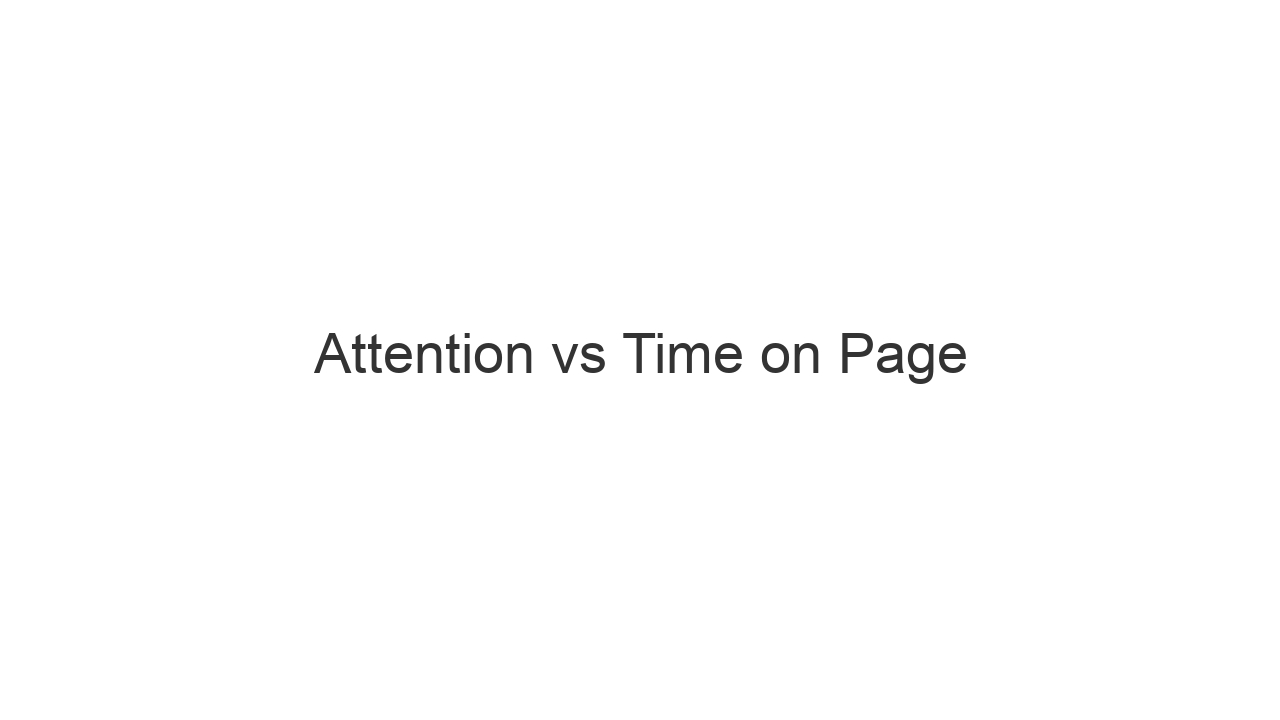Time on page measures the difference between when opens a webpage and then clicks another link. Or opens a new tab and visits the same domain. A common fallacy is that time on page represents all users, when it only captures those that complete those actions. So it is not reflective of an overall audience. It tends to skew up.
Attention measures second by second people are on a page paying attention. If they swap tabs it stops counting. When they resume, it resumes. This helps give data on ALL customers but also is far more precise.

|
|---|



